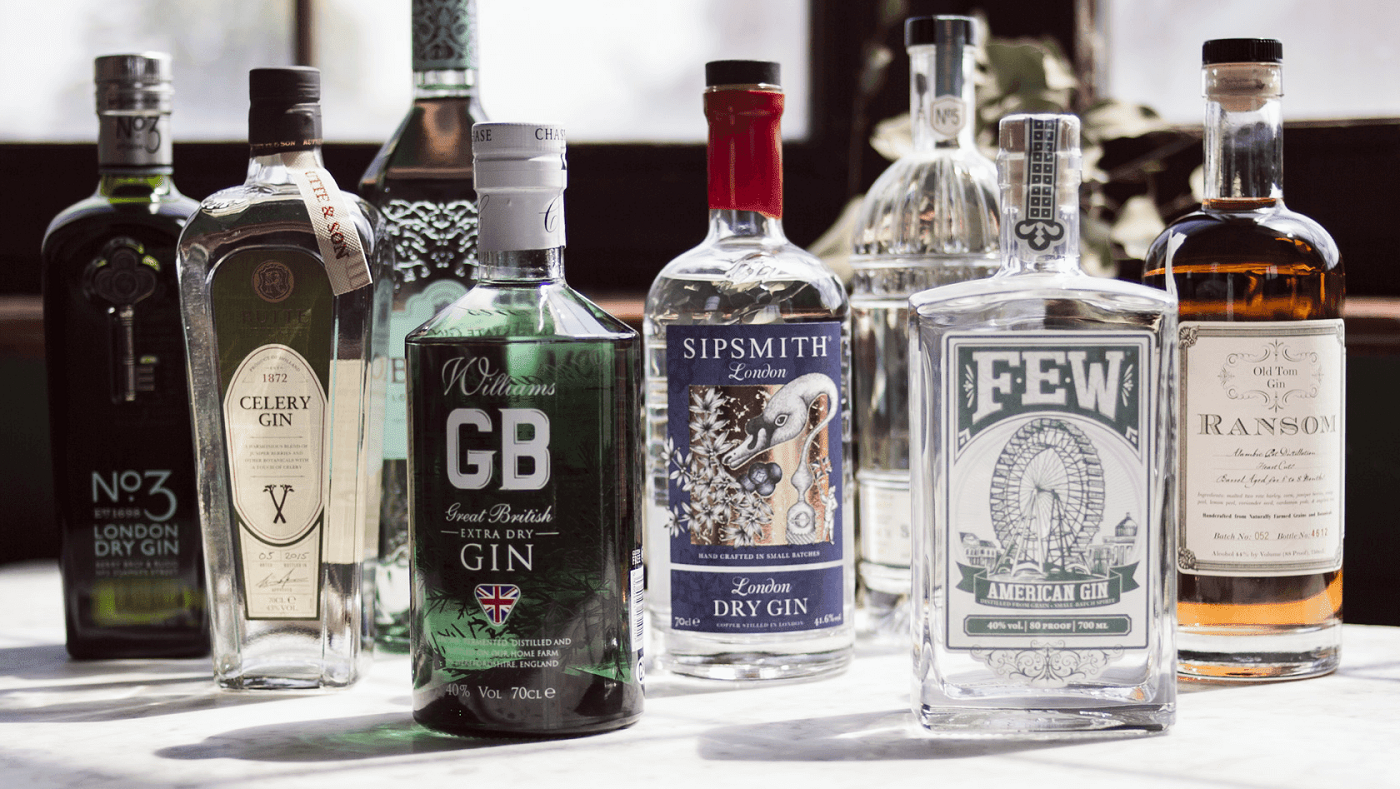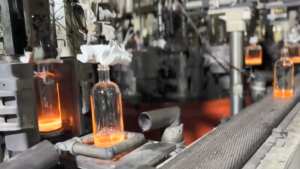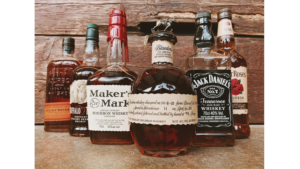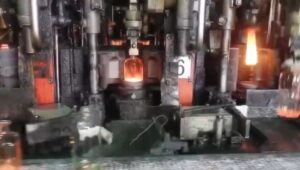Gin is one of most popular white spirits around the whole world, and it forms the basis of numerous cocktail drinks sharing various flavour. You may be a Gin lover, however, have you ever thought out what is Gin, the history of Gin, how Gin is made, what is Gin made from, how many different types of Gin? In this article, let’s learn the basis knowledge of Gin liqueur, for further understanding of the magical Gin drinks.
What is Gin?
Gin is a distilled alcoholic drink that derives its predominant flavour from juniper berries. Gin is a Dutch creation and the English made it popular worldwide. Today, a lot of spirits lovers throughout the world, including many fashion young drinkers consume the most gin. They mix the gin spirits to form the basis of numerous cocktail drinks share several similarities. Most of us recognize gin by its distinct flavor and aroma, however we don’t know what gives the gin spirits that flavor and aroma. The most noted flavor of gin is it pine flavor, which comes from its main ingredient–juniper berries–a small berry like botanical. Since the most noted character of gin is the pine flavor, therefore, a beverage can’t be called gin unless it has juniper berry ingredient.
Brief History of Gin
1. Dutch roots
The word ‘gin’ comes from the Dutch word ‘jenever’ which means ‘juniper’. The Dutch made spirits distilled with juniper berries from the Middle Ages, so we’re on fairly safe ground to say gin started there.
2. England’s First Gin Craze
After the ‘Glorious Revolution’ of 1688 that gin really started to become popular in England.One reason for its popularity was that William was Dutch, and the upper classes wanted to show their support for him by drinking a Dutch spirit. He also imposed a blockade on French imports – brandy among them. Beer was also heavily taxed. So, the price-sensitive urban poor moved on to gin. As you would too in their position.
3. 19th Century Improvements and Empire
Distilling technology in the 19th century helped the development of London Dry gin – the most famous type of gin.
Gin became popular among the Brits in the tropical areas of the Empire when it was added to the tonic water that contained anti-malarial quinine. The quinine was extremely bitter, so the gin helped smooth its passage down the throat. Bored, stressed and sweaty administrators of Empire now had a G&T (or several G&Ts) to look forward to after a day’s imperialism and before dinner each evening.
4. Modern Times
But generally speaking, gin in the 21st century is an exciting and innovative drink – quality has risen, the choice is huge, and there’s only one certainly, given the incredible history of gin over the past 300 years: there will be more change ahead.
- Ingredients: Juniper berries and other botanical
- Proof: 80-100
- ABV: 40–50%
- Calories in a shot: 64
- Origin: Netherlands, England
- Taste: Herbal, piney
- Serve: Cocktails
What is Gin Made From?
Gin is an alcoholic beverage obtained by distillation from a base of grain(wheat or barley). In a further procedure, botanicals along with water are added until the desired flavors are met. To be called a Gin, the Spirit must have a predominant flavor of Juniper Berries. Juniper is a type of aromatic “fruit” that grows along the branches of juniper trees.
key Ingredients in Gin
• Juniper berries
• Type of grain
• Gins come in different styles and flavors. Accordingly, the Spirit can be infused with a variety of herbs, botanicals, and spices. Common Botanicals in Gin are citrus, seeds, and rosemary.
How is Gin Made?
1–Making the Base Spirit
The first step in making gin is to make a base spirit, very much similar to vodka. This is done by fermenting a raw ingredient that contains sugar, and then distilling the resulting liquid to increase its alcohol content.
We start by selecting the raw ingredient that will be used to make the spirit – usually a type of grain. The choice of grain will define the flavour profile of the base spirit, so a good distiller chooses carefully. At the end of this process, we are left with a moderately alcoholic liquid called fermented wash. The wash is then distilled until a strongly alcoholic, high-purity, vodka-like base spirit is created. Finally, the base spirit is reduced down until it reaches an ABV of around 50%, ready for redistillation.
2–Adding Flavours through Redistillation
All gins are flavoured with one or more plant-derived ingredients, through a process of steeping and redistillation. The ingredients are often referred to as botanicals. Every true gin contains juniper. If a spirit doesn’t contain juniper in sufficient volumes, it cannot be called a gin.
The other botanicals added for steeping and redistillation can transform a spirit’s flavour. Widely used gin-making botanicals include coriander, cardamom, cinnamon, lime and grapefruit, to name a few. Some gin-lovers like a gin with a complex mix of botanicals. Others prefer a simpler approach that gives more prominence to the base spirit which has been used to make the gin. It’s all a matter of taste.
The traditional way to add botanicals to a gin is a process called steep and boil distillation. In this method, the juniper and any other desired botanicals are placed with the base spirit into a large vessel called a pot still. They are then left to stew for a period ranging from a few minutes to a few days, according to the distiller’s preference. The ingredients are then distilled together by boiling. This process extracts the essential oils from the botanicals and infuses them into the spirit.
Some distilleries flavour their gin using an alternative process known as vapour infusion. The process involves placing the botanicals in baskets, above the base spirit within the still. The spirit is heated, which causes it to evaporate and rise as vapour. It then infuses with the botanicals, and finally condenses into a flavoured spirit.
3–Lowering the Strength
After redistillation, we are left with a strongly flavoured, very strongly alcoholic distillate. This must be reduced down in alcoholic strength in order to make it safe and pleasant to consume. Typically, filtered water is added until the spirit reaches bottling strength, which usually means it has an alcohol content of about 40%. This process, usually concludes the gin-making journey.
4–Bottling
The hugely satisfying final step of making gin, is bottling the spirit. Technically, any sterile, sealable bottle will suffice.
How Many Types of Gin?
1-London Dry Gin
London dry gin is the best-known and most widely produced style of gin in the world today. It’s often considered the benchmark that defines gin. This is a juniper-forward, very dry gin. Its flowery and aromatic characteristics are a result of adding the botanicals during the second or third distillation. The vapors from these flavoring agents reach the alcohol as they pass through a specialized still with an attachment called a gin head. London dry gin is often preferred for making martinis and the most versatile for cocktails.
2-Plymouth Gin
Plymouth gin is a clear, slightly fruity, full-bodied gin that is very aromatic. This style originated in the port of Plymouth on the English Channel. Only one distillery, Plymouth, Coates & Co., has the right to produce it today, so it is both a style and a brand name. It is typically a good choice for cocktails that include fruits.
3-Old Tom gin
Old tom gin is a sweeter version of London dry gin. Simple syrup distinguishes this older style from its contemporaries and many include notes of citrus. Old Tom was the original gin used for the popular Tom Collins and the gin of choice for much of the 19th century. Not too long ago, Old Tom gin could be found almost exclusively in the U.K. Today it’s produced by a number of U.S. distilleries as well.
4-“New Western Dry” gin
New western dry gin (or “New American” gin) are names adopted by the international bartending community to describe a number ofmodern gins released in the early 2000s. These brands downplay juniper and were so different from the standard gins that there was much debate as to whether they could be classified as gin. Many were produced with modern cocktails and vodka drinkers in mind. They have a great appeal to consumers who are not fond of a heavy pine taste.
Best Bottles for Gin Spirits
Thick bottom super flint liquor bottles are the best Gin liqueur packing.
Here we would to suggest the most popular Gin bottles according to our clients throughout the world.
Long neck Gin bottle, or Arizona vodka bottle with cork closure, thick base foot, heavy glass, durable and stable. Various sizes for your options, 200ml 375ml 500ml 700ml and 750ml available.
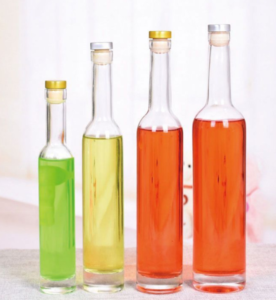
Square Gin bottle with cork, normal corks, glass cork and wooden cork choices.
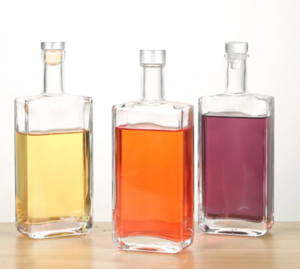
Nordic round liquor bottle for Gin liqueur, also called Oslo vodka bottle, 100ml 200ml 375ml 500ml 750ml and 1000ml capacities available.
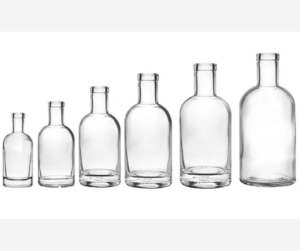
Square shoulder glass Gin bottles, also called Galileo Gin bottle, 100ml 500ml 750ml Gin bottles, sealed with corks.
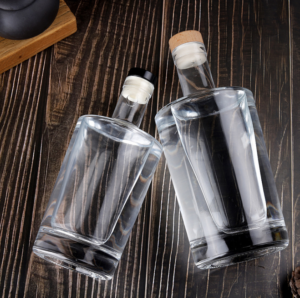
Apart from those stocked glass bottles for Gin spirits, we are able to customize your liquor bottle with various bottle decorations at affordable price.
Frosted bottles for vodka Gin liquor

Custom colored liquor bottles

Custom Liquor Bottle Manufacturer
Glass packaging is the perfect and most preferred liquor bottles you will see on the shelves. If you need quality liquor bottles for your alcohol, non-alcoholic beverages, vodka, gin, whiskey, cocktail and other, we are the best China glass bottle manufacturer. In our warehouse, a great variety of liquor bottles ready for sale. If you are in search of custom glass bottle, relying us as your experienced custom glass bottle manufacturer. We offer custom moulded glass bottles as clients’ bottle designs.

